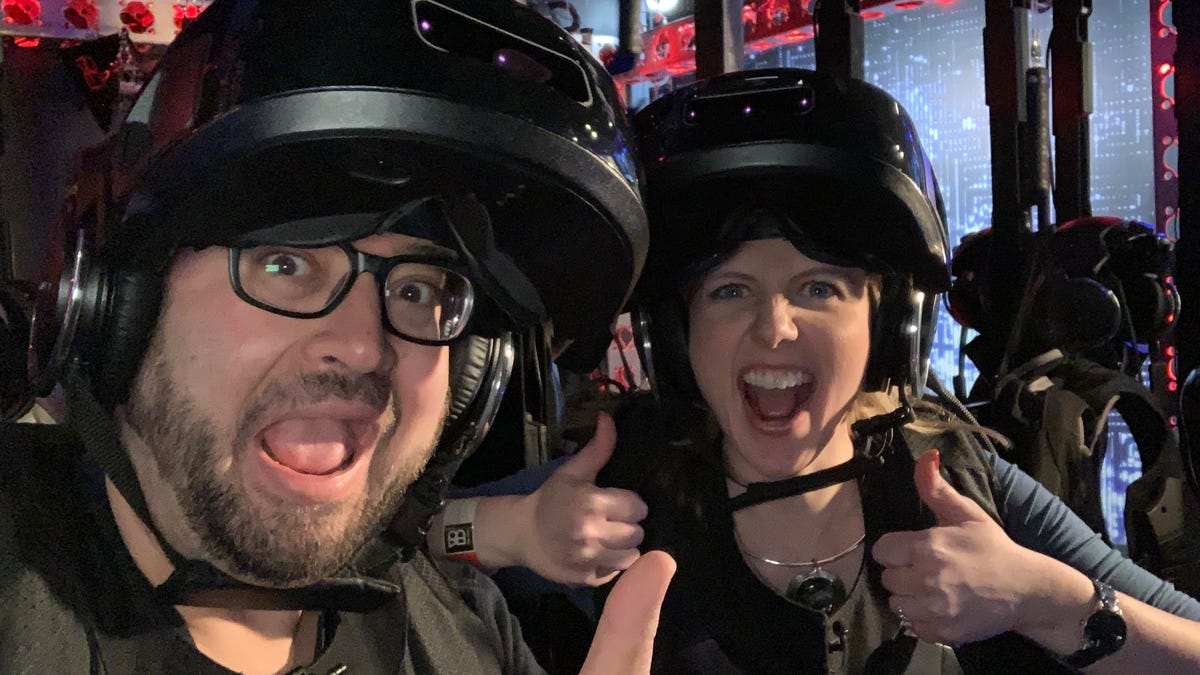VR needs more Disney-style magic like The Void from CES 2019
The Void's location-based VR attractions blend imagineering and old-school magic concepts. And VR needs these types of experiences more than ever.

Somewhere in a labyrinth of simulated Venetian canals in a Las Vegas mall, there's a slick-looking glowing storefront that's easy to miss. THE VOID, it says in large letters. Star Wars stormtroopers beckon from the windows.
We've come to climb inside Disney's Ralph Breaks The Internet movie at CES 2019, courtesy of The Void's location-based VR experience, "Ralph Breaks VR," just down the hall from the halls of the show.
Ralph Breaks VR launched last fall, and isn't "new" for CES. It's the first of five Disney experiences the company's creating in partnership with ILMxLab, including one based on a 2019 Marvel movie (they won't say which one yet). But it still wowed me, a seasoned vet of location-based VR, at a show already filled with other tech vying for my attention. It impressed both CNET editor Bridget Carey and myself, and worked a perfect blend of thrill ride and comforting onboarding. Even after all these years of VR, and especially with so much VR fatigue, good immersive design matters a lot. Even with heavy backpacks, I had a blast at The Void.
The Void's immersive experiences have been running at 11 locations around the world, with a Washington, DC center coming soon. I last tried holodeck-like multiroom experiences in 2016, putting on a VR backpack and zapping ghosts in Ghostbusters Dimension.
Now, Bridget and I are choosing Disney character identities from little cards on a table. We watch a short movie on a screen, where Ralph and Vanellope von Schweetz tell us what we're about to do.
Then we put on our VR backpacks and vibrating haptic vests to dive in to Wreck-It Ralph.
There's a good chance you still haven't tried any location-based VR. Think of a room where you can wander around in VR, but the objects in the room are perfectly mapped so you can reach out and feel the wall, press a button, open a door. The Void's founder and chief creative officer, Curtis Hickman, is a magician who explores working ideas of illusion, theater and magic theory to trick our brains better in VR.
Despite advanced VR backpacks and hand-tracking sensors that can show my fingers virtually, The Void's experiences also use good-old fashioned theatrical tech like fans and heaters. A room can feel toasty. A balcony in the Disney-fied version of the internet feels breezy. The floor rumbles when a massive glass-walled shuttle flies by.
After this, it sounds like The Void's modular physical spaces could be engineered to feel more like escape rooms. Expect some overlap. I didn't try their more magical, more haunted house-like Nicodemus experience yet. And The Void's upcoming Marvel VR experience could introduce even more tricks. But Hickman is quick to explain that the best immersive experiences come from a leap of trust, using key early moments to encourage people to reach out and touch real walls and buttons with your fingers.
I got so used to seeing Bridget next to me as a cartoon that I didn't think to look down and realize my avatar had no feet. The Void doesn't use trackers on legs or feet yet, but it never bothered me. Bridget's avatar seemed to have legs. So I assumed I did, too. The illusion was complete.
The Void's roughly 15-minute "rides" work with up to four people and cost roughly $30 a person, which is a splurge. But, it's cheaper than a vacation to Disney.
The Void's not the only company pursuing Disney-fied VR. Audi's Marvel-themed VR Holoride debuted at this year's CES, the company tuning its immersive thrills to work while riding in an actual car. Maybe it's not a surprise that both are Disney-themed. Disney rides know how to feel welcoming to all people. Disney rides aren't too scary. Disney rides are universal.
When I took off the headset afterward, I thought I was finishing a ride at Disneyland. And that's the type of feeling more VR still needs.
CES 2019: See all of CNET's coverage of the year's biggest tech show.
CES schedule: It's six days of jam-packed events. Here's what to expect.

